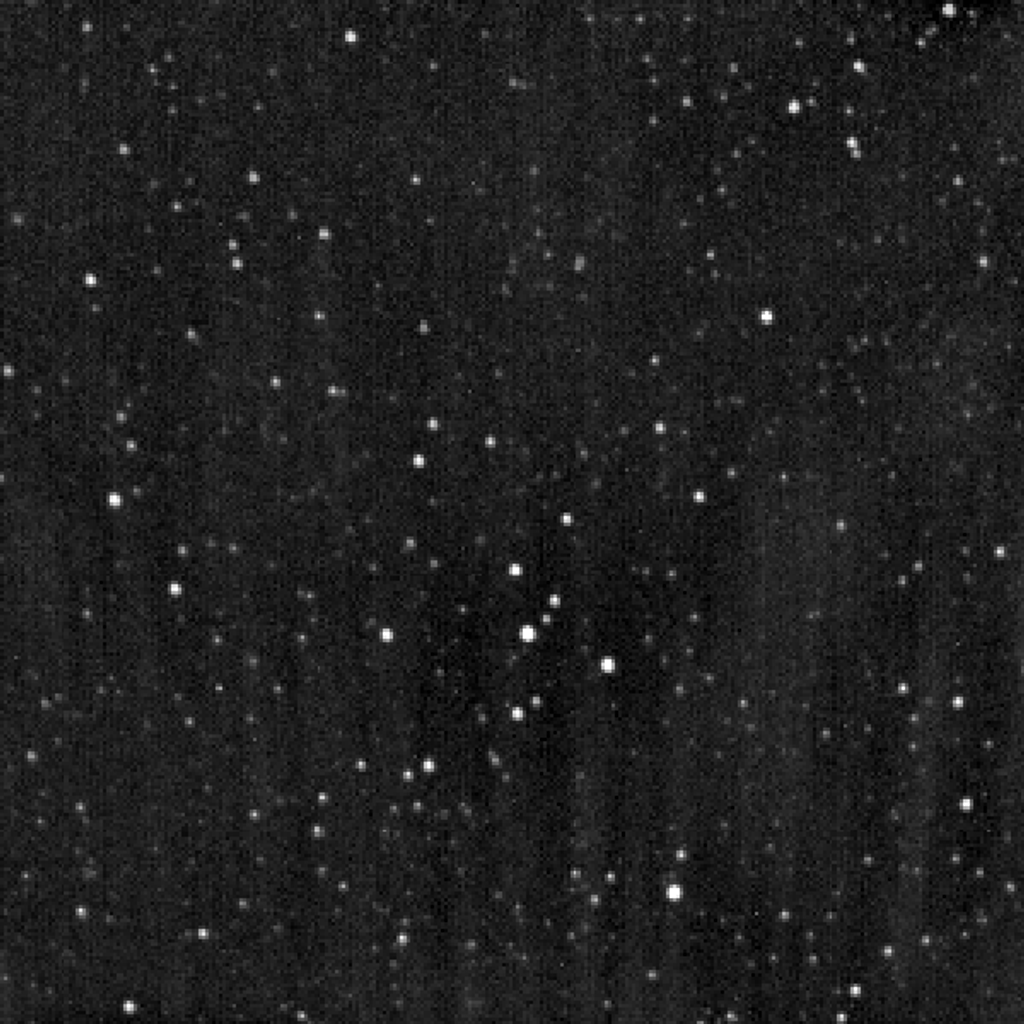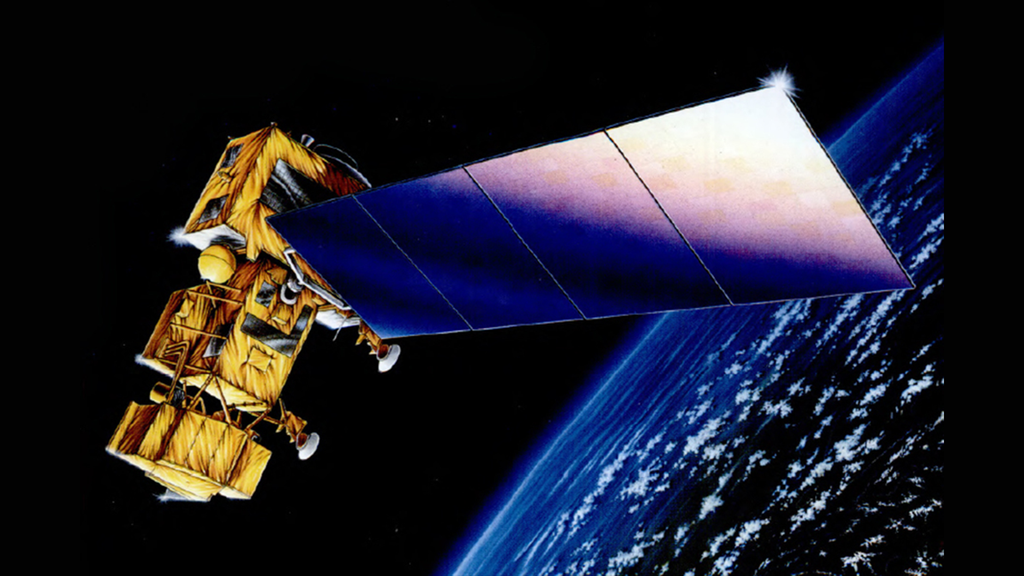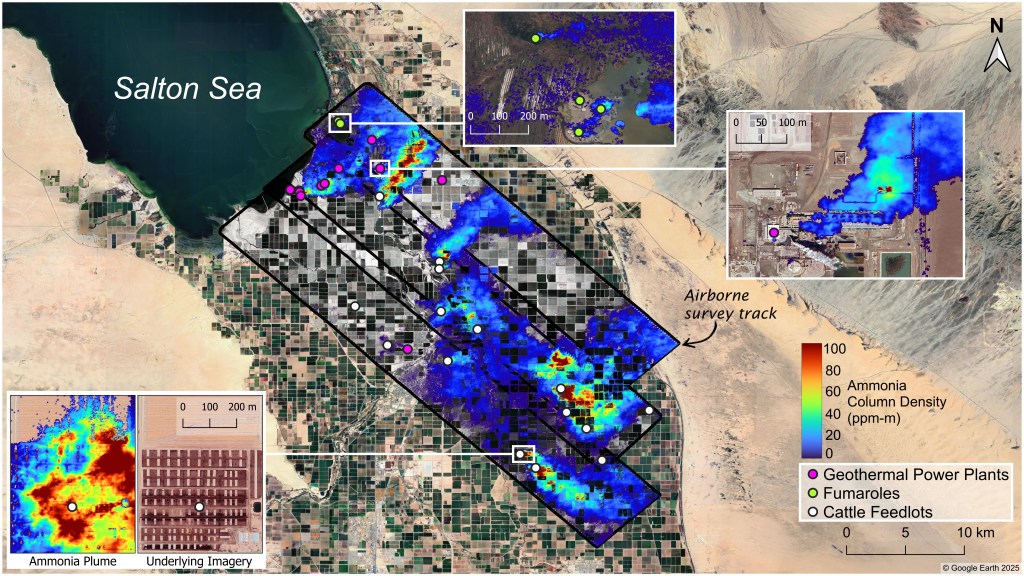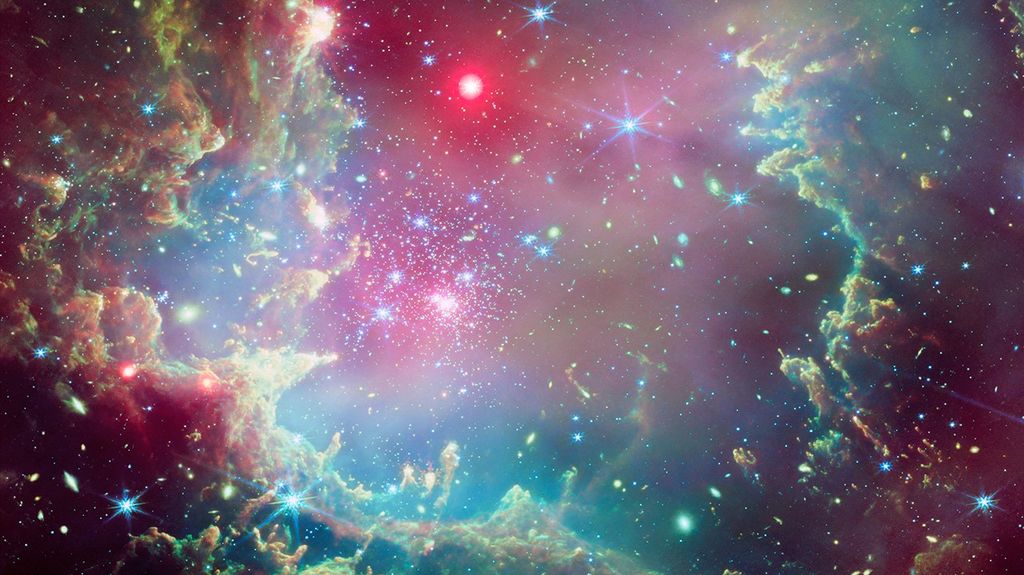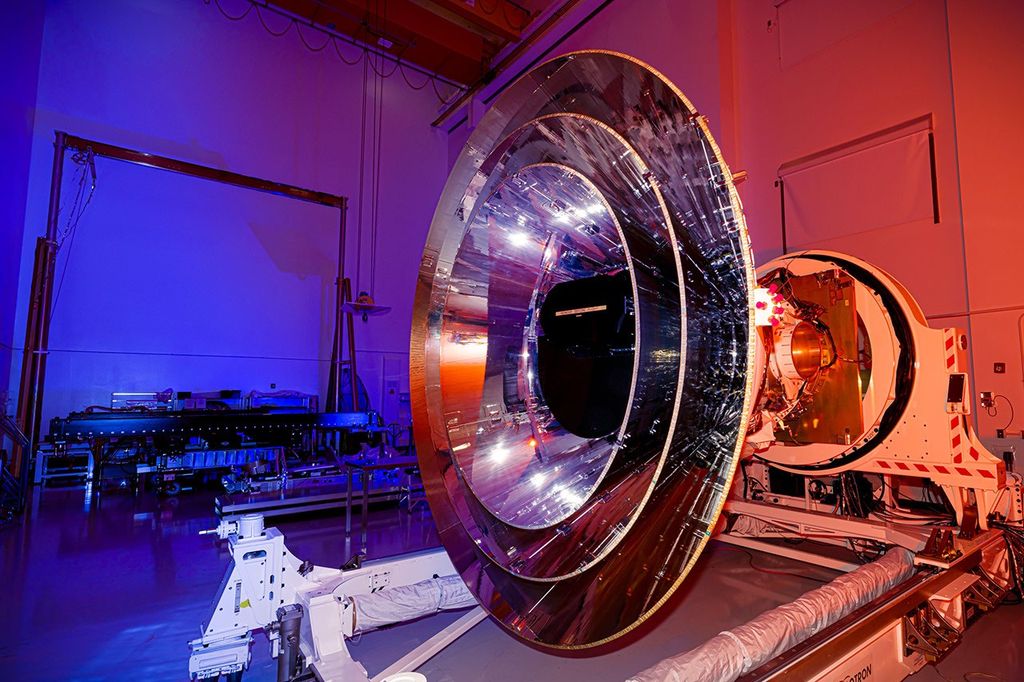1 min read
GRB 200522A

This image shows the glow from a kilonova caused by the merger of two neutron stars. The kilonova, whose peak brightness reaches up to 10,000 times that of a classical nova, appears as a bright spot (indicated by the arrow) to the upper left of the host galaxy. The merger of the neutron stars is believed to have produced a magnetar, which has an extremely powerful magnetic field. The energy from that magnetar brightened the material ejected from the explosion.
About the Object
- R.A. PositionR.A. PositionRight ascension – analogous to longitude – is one component of an object's position.00:22:43.71
- Dec. PositionDec. PositionDeclination – analogous to latitude – is one component of an object's position.-00:16:57.52
- ConstellationConstellationOne of 88 recognized regions of the celestial sphere in which the object appears.Pisces
- DistanceDistanceThe physical distance from Earth to the astronomical object. Distances within our solar system are usually measured in Astronomical Units (AU). Distances between stars are usually measured in light-years. Interstellar distances can also be measured in parsecs.About 5.4 billion light years away
About the Data
- Data DescriptionData DescriptionProposal: A description of the observations, their scientific justification, and the links to the data available in the science archive.
Science Team: The astronomers who planned the observations and analyzed the data. "PI" refers to the Principal Investigator.The HST observations include those from program 15964 (E. Berger) - InstrumentInstrumentThe science instrument used to produce the data.WFC3/IR
- Exposure DatesExposure DatesThe date(s) that the telescope made its observations and the total exposure time.26 May 2020
- FiltersFiltersThe camera filters that were used in the science observations.F125W, F160W
- Object NameObject NameA name or catalog number that astronomers use to identify an astronomical object.GRB 200522A
- Object DescriptionObject DescriptionThe type of astronomical object.Kilonova
- Release DateNovember 12, 2020
- Science ReleaseNASA’s Hubble Sees Unexplained Brightness from Colossal Explosion
- Credit

These images are a composite of separate exposures acquired by the WFC3/IR instrument on the Hubble Space Telescope. Several filters were used to sample specific wavelength ranges. The color results from assigning different hues (colors) to each monochromatic (grayscale) image associated with an individual filter. In this case, the assigned colors are: Blue: F125W Orange: F160W
Related Images & Videos

Collision Sequence for a Magnetar-Powered Kilonova Blast Illustration
This illustration shows the sequence for forming a magnetar-powered kilonova, whose peak brightness reaches up to 10,000 times that of a classical nova. 1) Two orbiting neutron stars spiral closer and closer together. 2) They collide and merge, triggering an explosion that...
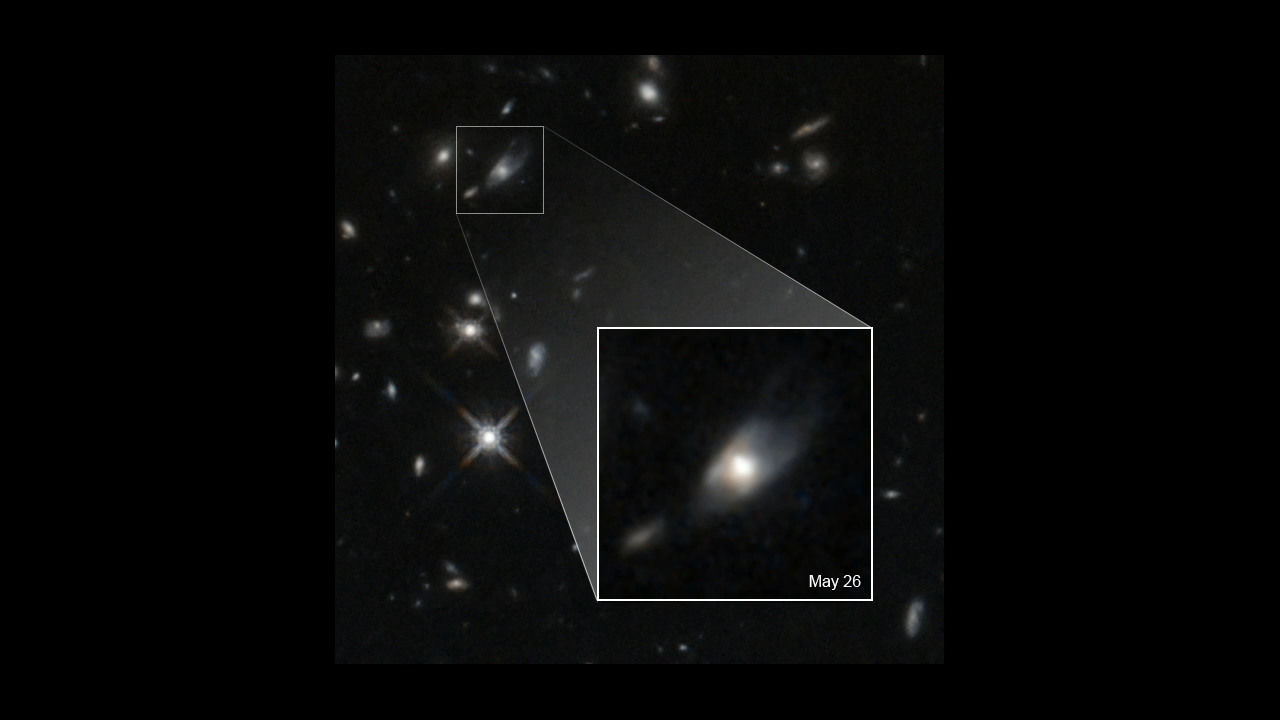
Kilonova Fade-out
These two images taken on May 26 and July 16, 2020, show the fading light of a kilonova located in a distant galaxy. The kilonova appears as a spot to the upper left of the host galaxy. The glow is prominent in the May 26 image but fades in the July 16 image. The kilonova's peak...
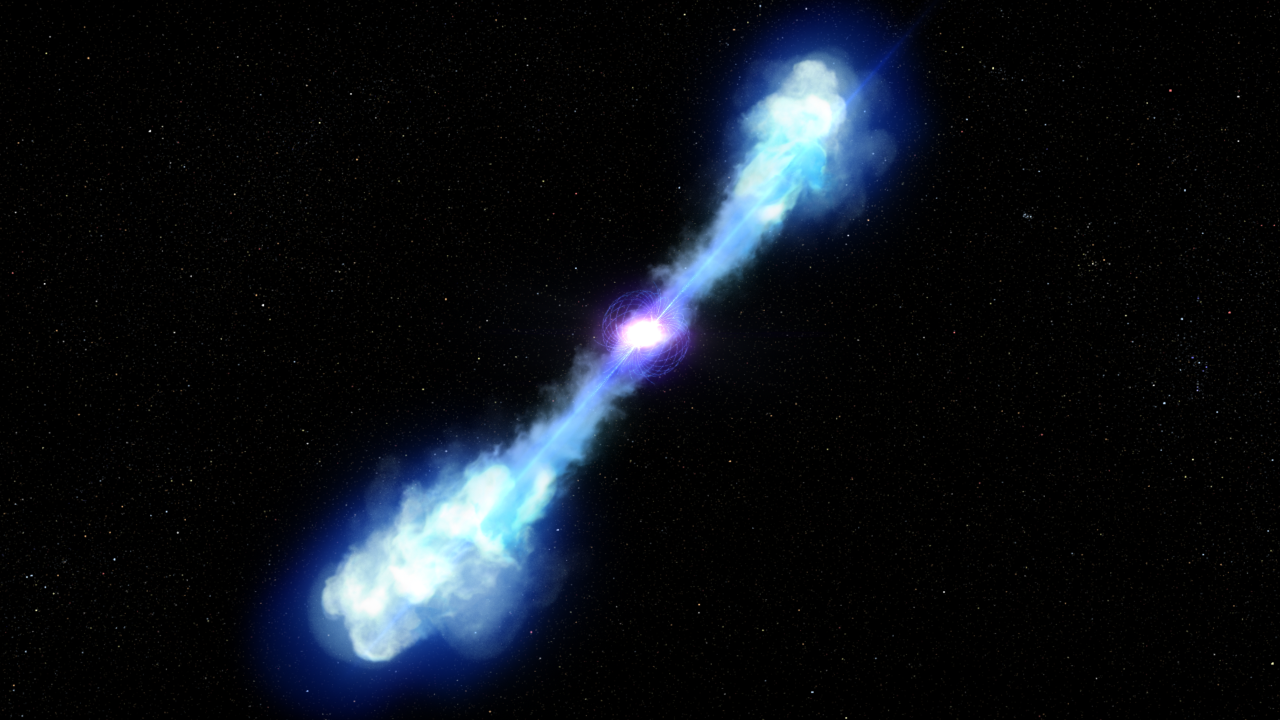
Magnetar-Powered Kilonova Blast
This animation shows the sequence for forming a magnetar-powered kilonova, whose peak brightness reaches up to 10,000 times that of a classical nova. In this sequence, two orbiting neutron stars spiral closer and closer together before colliding and merging. This triggers an...
Share
Details
Claire Andreoli
NASA’s Goddard Space Flight Center
Greenbelt, Maryland
claire.andreoli@nasa.gov






